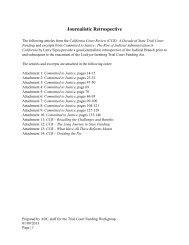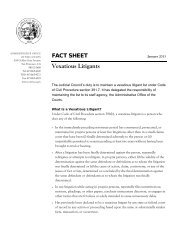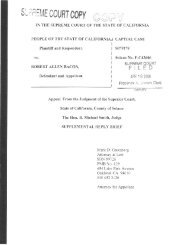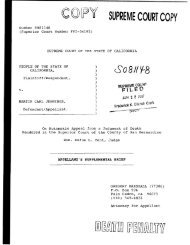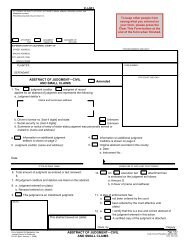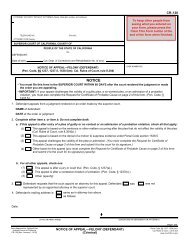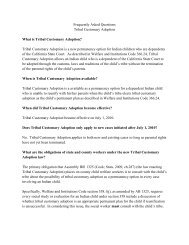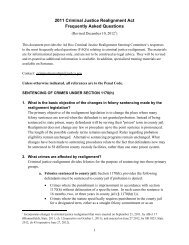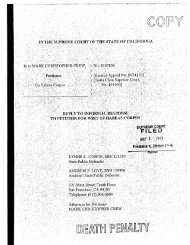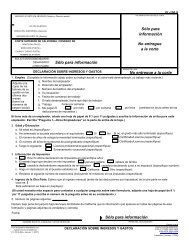Appellant, William Satele, Reply Brief - California Courts - State of ...
Appellant, William Satele, Reply Brief - California Courts - State of ...
Appellant, William Satele, Reply Brief - California Courts - State of ...
Create successful ePaper yourself
Turn your PDF publications into a flip-book with our unique Google optimized e-Paper software.
The jury in Cruz was given a version <strong>of</strong>the juror's oath that failed to ask the jury<br />
to follow the instructions <strong>of</strong>the court. The Court <strong>of</strong>Appeal declined to find error,<br />
holding that the jurors had a separate duty, independent <strong>of</strong> that embedded within<br />
the juror's trial oath, to follow the court's instructions. (Id. at p. 73.)<br />
<strong>Appellant</strong>'s opening brief discussed various reasons why the holding in<br />
Cruz was problematic. (AOB 223-224.) <strong>Appellant</strong> respectfully requests that this<br />
court take note that respondent refutes none <strong>of</strong> appellant's assertions and therefore<br />
impliedly concedes them12.<br />
C. Standard OfReview And Prejudice<br />
Respondent contends harmless error analysis under Lewis is appropriate<br />
without ever explaining why a case considering error under subdivision (a) <strong>of</strong><br />
Code <strong>of</strong>Civil Procedure 232 sets the governing standard <strong>of</strong>review in a case where<br />
the defect was the failure to administer the oath described in subdivision (b).<br />
As appellant has discussed above, the juror's oath set forth in subdivision<br />
(a) requires prospective jurors to answer all questions concerning their<br />
qualifications and competency both accurately and truthfully. In Lewis,<br />
prospective jurors completed written juror questionnaires, which they signed under<br />
penalty <strong>of</strong> perjury, before they were administered the oath in subdivision (a) in<br />
open court. This court found the prospective jurors should have been sworn under<br />
subdivision (a) before they filled out the questionnaires, but concluded there was<br />
no prejudice in this matter where the thrust <strong>of</strong> the issue was timeliness and, the<br />
Court found nothing in the record that suggested voir dire examination was<br />
inadequate. (People v. Lewis, supra, 25 Ca1.4th at p. 631.)<br />
As appellant pointed out above and in the opening brief, voir dire<br />
examination affords a defendant the opportunity to mitigate any prejudice flowing<br />
12 In addition, respondent relies on Cruz in arguing for the adequacy <strong>of</strong>the oaths<br />
administered at trial only to make the point that "jurors decide the facts and the<br />
court instructs them on the law." (RB at p. 86.)<br />
114



